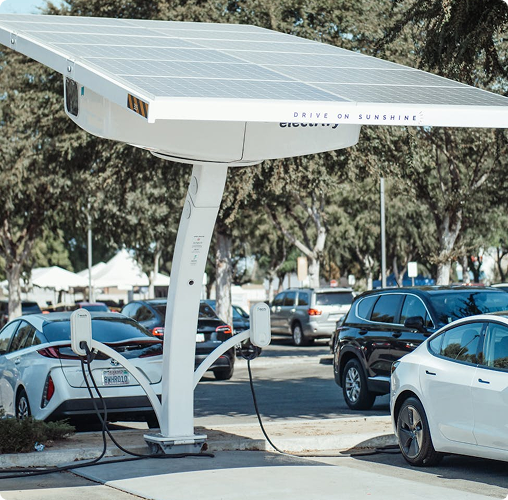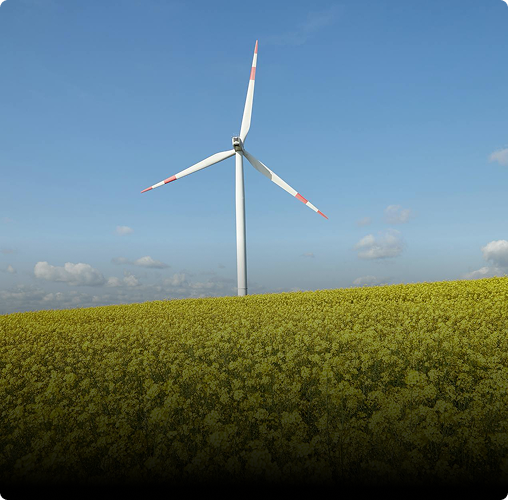
Tropospheric Ozone
TROPOSPHERIC OZONE
Tropospheric ozone (O₃) is formed through photochemical reactions involving methane, nitrogen oxides (NOₓ), and volatile organic compounds (VOCs). With an atmospheric lifetime of weeks, it contributes to radiative forcing and poses significant risks to human health, ecosystems, and crop productivity.
Controlling ozone precursors offers co-benefits for climate, air quality, and food security.


Precursors Driving Tropospheric Ozone Formation
Precursors Driving Tropospheric Ozone Formation
Tropospheric ozone forms from reactions involving NOₓ and Non methane volatile organic compounds (NMVOC) emissions , mainly released by transport, industry,power, and domestic sectors. The charts below show sector-wise emission shares (%) for 2017, and projected trends for 2030 and 2040.
NOₓ Emissions Projections
NMVOC Emissions Projections
Key Contributors to Tropospheric Ozone (O3) Formation


Crop Burning


Biogenic Emissions


Agriculture


Fossil Fuel Combustion


Transportation


Lightning and Soil NOₓ


Wildfires


Climate Impacts
Mitigation Measures
Implementing targeted mitigation strategies to reduce ozone precursors like NOₓ and VOCs is essential for controlling ground-level ozone. These measures support cleaner air, healthier communities, and climate co-benefits.

Reducing Emissions of Ozone Precursor Pollutants
Transitioning to renewable energy like NOₓ and VOCs through cleaner technologies and regulations can significantly reduce ground-level ozone and improve air quality.
-
 Vehicle Emissions Standards: Implement stricter standards
and improve fuel quality using technologies like catalytic
converters.
Vehicle Emissions Standards: Implement stricter standards
and improve fuel quality using technologies like catalytic
converters.
-
 Industrial Emissions: Adopt cleaner technologies, such as
low-NOₓ burners and selective catalytic reduction (SCR)
systems.
Industrial Emissions: Adopt cleaner technologies, such as
low-NOₓ burners and selective catalytic reduction (SCR)
systems.
-
 Power Plant Optimization: Transition to cleaner energy
sources (e.g., wind, solar) and retrofit plants to limit NOₓ
emissions.
Power Plant Optimization: Transition to cleaner energy
sources (e.g., wind, solar) and retrofit plants to limit NOₓ
emissions.
Controlling NOₓ Emissions:
-
 Regulating Solvent Use: Develop regulations and low-VOC
alternatives for solvents, paints, and cleaning agents.
Regulating Solvent Use: Develop regulations and low-VOC
alternatives for solvents, paints, and cleaning agents.
-
 Improving Agricultural Practices: Enhance fertilizer
application techniques and livestock management to lower VOC
emissions.
Improving Agricultural Practices: Enhance fertilizer
application techniques and livestock management to lower VOC
emissions.
-
 Adoption of Low-VOC Products: Encourage the use of low-VOC
items in industrial and residential settings.
Adoption of Low-VOC Products: Encourage the use of low-VOC
items in industrial and residential settings.
Reducing VOC Emissions:

Promoting Cleaner Energy and Transportation
Transitioning to renewable energy and cleaner transport systems helps reduce ozone precursors like NOₓ and VOCs, supporting better air quality and climate goals.
-
 Shifting to Renewable Energy: Transition from fossil fuels
to renewable sources like solar and wind to reduce NOₓ and
VOC emissions.
Shifting to Renewable Energy: Transition from fossil fuels
to renewable sources like solar and wind to reduce NOₓ and
VOC emissions.
-
 Electrification of Transportation: Promote electric vehicles
(EVs) to decrease reliance on combustion engines and lower
NOₓ emissions.
Electrification of Transportation: Promote electric vehicles
(EVs) to decrease reliance on combustion engines and lower
NOₓ emissions.
-
 Improving Fuel Efficiency: Implement fuel-efficient
technologies in vehicles and industrial equipment to cut
ozone precursor emissions.
Improving Fuel Efficiency: Implement fuel-efficient
technologies in vehicles and industrial equipment to cut
ozone precursor emissions.

Public Health and Environmental Awareness
Raising awareness and improving air quality monitoring empower communities to take preventive actions against ozone-related health and environmental risks.
-
 Public Health Campaigns: Raise awareness about ozone
exposure risks, especially on high-ozone days, encouraging
limited outdoor activities.
Public Health Campaigns: Raise awareness about ozone
exposure risks, especially on high-ozone days, encouraging
limited outdoor activities.
-
 Air
Quality Monitoring: Enhance monitoring systems to predict
ozone levels, allowing the public to take precautions during
poor air quality.
Air
Quality Monitoring: Enhance monitoring systems to predict
ozone levels, allowing the public to take precautions during
poor air quality.
Benefits
Climate Benefits
Tropospheric ozone is a powerful climate forcer with strong links to methane. Reducing its levels can deliver immediate climate benefits and support broader greenhouse gas mitigation efforts.
Reduction in Radiative Forcing and
Global Warming Potential:
Tropospheric ozone, the third most important anthropogenic greenhouse
gas after CO₂ and methane, contributes ~0.4 W/m² to radiative forcing.
Reducing precursors like methane can lower ozone levels and curb
near-term warming.
Synergies with Methane
Reduction:
As a key precursor, reducing methane through better agriculture,
landfill, and oil & gas management helps lower both methane and ozone
levels—delivering dual benefits and added cooling effects.
Influence on Atmospheric
Chemistry:
Ozone plays a key role in atmospheric oxidation processes, affecting the
lifetime of other greenhouse gases such as methane. Reducing ozone
concentrations can indirectly influence the balance of climate-forcing
agents in the atmosphere.

Health Benefits
Tropospheric ozone harms respiratory health and increases healthcare burdens. Its reduction can prevent premature deaths, cut medical costs, and protect outdoor workers.
Reduction in Respiratory and
Cardiovascular Diseases:
Tropospheric ozone, a major part of urban smog, is linked to asthma,
chronic obstructive pulmonary disease (COPD), lung inflammation, and
cardiovascular morbidity, and heart diseases, causing over 1 million
premature deaths annually. Controlling its precursors can reduce
hospital admissions and mortality.
Decreased Healthcare
Costs:
By mitigating ozone exposure, healthcare systems can experience
significant cost savings. Studies estimate that reducing ozone levels to
WHO-recommended thresholds could prevent hundreds of thousands of
hospital visits annually, translating to billions of dollars in saved
healthcare expenses.
Improved Occupational and Outdoor
Worker Health:
Workers exposed to high ozone levels, such as farmers and construction
laborers, are at higher risk of respiratory issues. Reducing ozone
concentrations enhances workplace safety and productivity.

Environmental Benefits
Tropospheric ozone harms ecosystems, reduces crop yields, and worsens air quality. Its mitigation supports environmental health, food security, and cleaner urban air.
Preservation of Ecosystem
Functioning:
Tropospheric ozone negatively affects forests, grasslands, and
freshwater ecosystems. Ozone exposure leads to reduced photosynthesis,
decreased carbon sequestration, and altered nutrient cycling in plants.
Mitigation of Crop Yield
Losses:
Ozone damages plant stomata, reducing photosynthesis and crop
productivity. Global yield losses are estimated at 4–12% for wheat,
6–16% for soybean, and 3–5% for rice. Mitigating ozone can enhance food
security and economic stability in agriculture.
Improved Air Quality and Reduced Smog
Formation:
Ozone interacts with fine particulate matter (PM₂.₅), exacerbating urban
air pollution. Reducing its precursors enhances overall air quality,
leading to cleaner cities and better public health outcomes.

Socioeconomic Benefits
Reducing tropospheric ozone offers strong socioeconomic returns by improving productivity, lowering healthcare costs, and aligning with broader climate and development goals.
Enhanced Economic
Productivity:
Ozone-related health impacts and crop losses reduce labor output and
GDP. Reducing ozone can generate billions in global economic gains by
cutting absenteeism, improving yields, and lowering healthcare costs
Cost-Effective Mitigation
Strategies:
Reducing methane to lower ozone levels is a highly cost-effective
approach, with studies showing that the health and climate benefits far
exceed the implementation costs,making it a low-cost strategy with high
returns.
Improved Policy
Synergies:
Strategies to cut ozone align well with climate action, air pollution
control, and the Sustainable Development Goals (SDGs). Integrating these
efforts enhances overall policy impact and maximizes co-benefits across
sectors.

